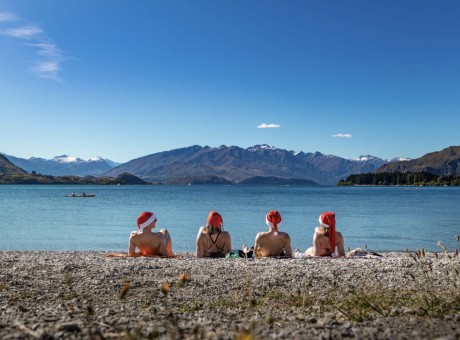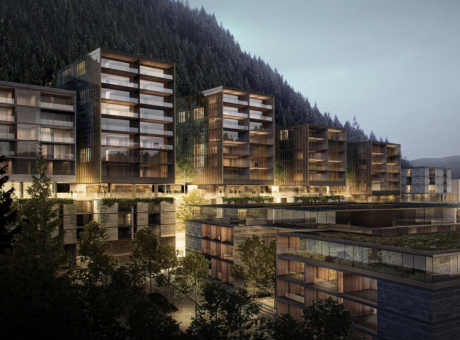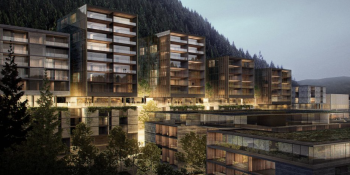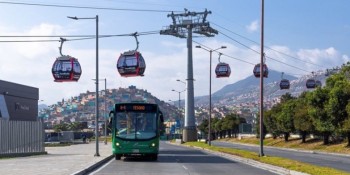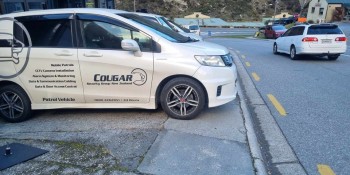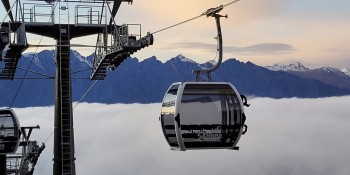Wanaka cell tower battle shifts to Hawea
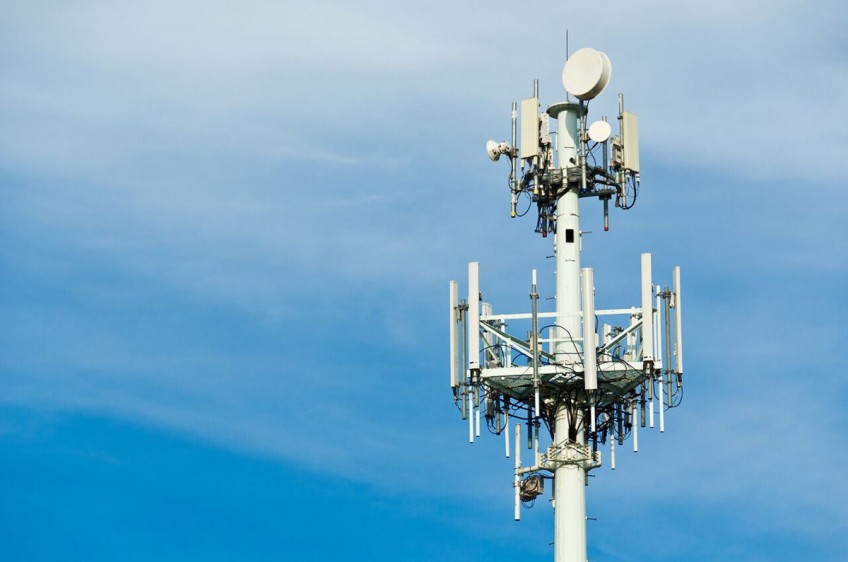
When Barry Bruce used his digger to obstruct the building of a Spark cell tower last November, it looked like he might score a win for the neighbourhood. He had managed to rally support from fellow Mt Aspiring Road residents, and Spark sent three representatives from Auckland down to discuss alternative sites.
Unfortunately for Mr Bruce and his neighbours, however, those alternative sites failed to meet Spark’s objectives, and the eleven metre tower proceeded to be built directly in front of his home.

In full fight - residents block the Wanaka cell site while Spark fought back with a "no option" argument after researching other sites.
“The legislation that the previous government enacted in 2017 essentially gives Spark free range,” says Mr Bruce. “It seems ironic when the average person building a house has to go through an extensive planning process and get consents, while Spark don’t have to do that.”
Spark was granted a certificate of compliance from the Queenstown Lakes District Council and was not legally required to publicly notify residents of the proposed Mt Aspiring Road tower.

Barry Bruce this week - in front of the 11 metre cell tower he ultimately could not block.
Spark New Zealand Lead Corporate Relations Partner at the time, Michelle Baguley, told Crux that not only was the tower was needed to keep up with Wanaka’s demand, it had to be in that site. You can read further details in our story from November.
“We had five different teams working on this for several months, looking for a site that could give us the coverage we need in the patches where we don’t have cover, and this is that site,” Ms Baguley said.
She said that a commitment was made to the mayor that the ‘catastrophic’ media coverage two years ago of Wanaka residents having no cell phone coverage over Christmas/New Year period would never happen again.
“We thought we’d had a wee win,” says Mr Bruce, “but they came back within a very short space of time and said the other sites they were looking into wouldn’t work and they were proceeding. So that was that, we didn’t have any other grounds to argue with them. In the end they just walked all over us,” says Mr Bruce.
The view from Mr Bruce’s house, which he has lived in with his family for 20 years, is directly affected by the tower. He’s equally worried about the unknown health effects of radiation from cell phone towers, especially as hundreds continue to be erected in residential zones across the country to keep up with demand.
The evidence in limited, however, and according to Spark Corporate Relations Partner, Anaru Tuhi, Spark agrees with the WHO position: that there is no clear evidence mobile phones or cell sites present a risk to human health, so long as they meet the recommended standards and regulations. Spark operates within these.
Mr Bruce, however, thinks if there’s any doubt, the government needs to err on the side of caution with the legislation. He says that in other countries, including Australia, it’s illegal to build cell towers within a certain range of residential dwellings, simply because of the uncertainty of the risk of radiation effects.
“There are signs on there saying don’t go near it. They say it’s no worse than your microwave but you don’t stand in front of your microwave 7 days a week 24 hours a day.”
According to Mr Bruce, the representatives from Spark told him they would eventually upgrade the tower, which means eventually using it to provide 5G technology.
Mr Tuhi says the 5G service will be designed to comply with current and future standards, so in this respect there is will be a negligible difference between 5G, 4G or even 3G.
“Some people have raised questions about the prospect of some future 5G services operating in frequency bands higher than those used by current mobile devices. It is true that currently there has been less testing of exposure levels at these frequencies and new test procedures are underway,” says Mr Tuhi, and says Spark won’t be offering 5G until there’s an international standard developed.
Mr Bruce says it’s a frustrating situation, and one that should be protected against by both government and corporate responsibility. “Yes, the legislation needs to be looked at, but I think if Spark were a good corporate citizen, they wouldn’t be as brutal. They’re worried about their shareholder value and their bottom line. I think if they had more empathy with the communities that they’re working in, that they may change their ways,”
Mr Bruce is now offering advice to the Hawea Community Association, who are opposing their own Spark cell tower. According to chair April Mackenzie, the Hawea community have a better chance of success because the proposed tower is sixteen metres high, requiring Spark to obtain resource consent and allowing residents to make submissions until June 28.
“The mountain vistas through the region are critical, but they’re particularly critical in Lake Hawea, because of the shape of the town,” says Ms Mackenzie. “Our mountains are very close, and this tower is going to shoot straight through the skyline,”
The proposed site for the tower is next to Peter Fraser park on the main road of the town.
Ms Mackenzie says the community tried to work with Spark to find other sites, and have now engaged an independent landscape architect to write them a report about the impact of the tower. She says while the community have been very vocal in opposing the tower both for health reasons and visual obstruction, they were focussing on the visual impact because of the tight time frame.
When Barry Bruce used his digger to obstruct the building of a Spark cell tower last November, it looked like he might score a win for the neighbourhood. He had managed to rally support from fellow Mt Aspiring Road residents, and Spark sent three representatives from Auckland down to discuss alternative sites.

People Power - Wanaka residents vs Spark. Will the same tactics work or not in Hawea?
Unfortunately for Mr Bruce and his neighbours, however, those alternative sites failed to meet Spark’s objectives, and the eleven metre tower proceeded to be built directly in front of his home.
“The legislation that the previous government enacted in 2017 essentially gives Spark free range,” says Mr Bruce. “It seems ironic when the average person building a house has to go through an extensive planning process and get consents, while Spark don’t have to do that.”
Spark was granted a certificate of compliance from the Queenstown Lakes District Council and was not legally required to publicly notify residents of the proposed Mt Aspiring Road tower.
Spark New Zealand Lead Corporate Relations Partner at the time, Michelle Baguley, told Crux that not only was the tower was needed to keep up with Wanaka’s demand, it had to be in that site. You can read further details in our story from November.
“We had five different teams working on this for several months, looking for a site that could give us the coverage we need in the patches where we don’t have cover, and this is that site,” Ms Baguley said.
She said that a commitment was made to the mayor that the ‘catastrophic’ media coverage two years ago of Wanaka residents having no cell phone coverage over Christmas/New Year period would never happen again.
“We thought we’d had a wee win,” says Mr Bruce, “but they came back within a very short space of time and said the other sites they were looking into wouldn’t work and they were proceeding. So that was that, we didn’t have any other grounds to argue with them. In the end they just walked all over us,” says Mr Bruce.

April Mackenzie - "Hawea does not give up."
The view from Mr Bruce’s house, which he has lived in with his family for 20 years, is directly affected by the tower. He’s equally worried about the unknown health effects of radiation from cell phone towers, especially as hundreds continue to be erected in residential zones across the country to keep up with demand.
The evidence in limited, however, and according to Spark Corporate Relations Partner, Anaru Tuhi, Spark agrees with the WHO position: that there is no clear evidence mobile phones or cell sites present a risk to human health, so long as they meet the recommended standards and regulations. Spark operates within these.
Mr Bruce, however, thinks if there’s any doubt, the government needs to err on the side of caution with the legislation. He says that in other countries, including Australia, it’s illegal to build cell towers within a certain range of residential dwellings, simply because of the uncertainty of the risk of radiation effects.
“There are signs on there saying don’t go near it. They say it’s no worse than your microwave but you don’t stand in front of your microwave 7 days a week 24 hours a day.”
According to Mr Bruce, the representatives from Spark told him they would eventually upgrade the tower, which means eventually using it to provide 5G technology.
Mr Tuhi says the 5G service will be designed to comply with current and future standards, so in this respect there is will be a negligible difference between 5G, 4G or even 3G.
“Some people have raised questions about the prospect of some future 5G services operating in frequency bands higher than those used by current mobile devices. It is true that currently there has been less testing of exposure levels at these frequencies and new test procedures are underway,” says Mr Tuhi, and says Spark won’t be offering 5G until there’s an international standard developed.
Mr Bruce says it’s a frustrating situation, and one that should be protected against by both government and corporate responsibility. “Yes, the legislation needs to be looked at, but I think if Spark were a good corporate citizen, they wouldn’t be as brutal. They’re worried about their shareholder value and their bottom line. I think if they had more empathy with the communities that they’re working in, that they may change their ways,”
Mr Bruce is now offering advice to the Hawea Community Association, who are opposing their own Spark cell tower. According to chair April Mackenzie, the Hawea community have a better chance of success because the proposed tower is sixteen metres high, requiring Spark to obtain resource consent and allowing residents to make submissions until June 28.
“The mountain vistas through the region are critical, but they’re particularly critical in Lake Hawea, because of the shape of the town,” says Ms Mackenzie. “Our mountains are very close, and this tower is going to shoot straight through the skyline,”
The proposed site for the tower is next to Peter Fraser park on the main road of the town.
Ms Mackenzie says the community tried to work with Spark to find other sites, and have now engaged an independent landscape architect to write them a report about the impact of the tower. She says while the community have been very vocal in opposing the tower both for health reasons and visual obstruction, they were focussing on the visual impact because of the tight time frame.
“We’re looking forward to the hearing, and let’s just say Hawea doesn’t give up!”





